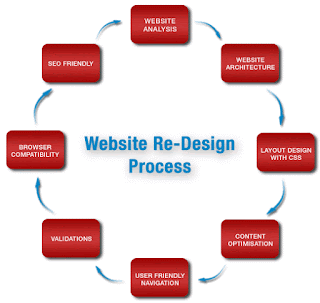The
question that occupies everyone that wants to redesign his or her
website is will entail a complete overhaul of the website’s design,
layout, content and user experience? Most companies go for the
jugular when redesigning their website, ending up with budgets
overshooting but conversions plummeting. So what is the right website
redesign strategy? Will a mere redesign lift your sales and revenue?
That’s what we’ll be looking at in this article.
Traditional
Website Redesign
The
first step in website redesign is to analyse risk. Risk analysis
involves enumerating the number of changes that you make in
redesigning the website and also the scale and impact of those
changes. Let us say that you propose to change your home page title
and layout as also the navigation bar. Now the first two fall under
the category of sweeping changes as their reach and impact on the
customer’s mind is more pronounced.
Some
of the most common changes that people do in a website redesign is:
- Changing the home page title(s)
- Changing the images and icons
- New graphic designs with headlines
- Changed call-to-action buttons
- New navigation and forms
The
Right Approach
The
right web design approach would have a mechanism in place to measure
the changes in web design against user traffic on the website. The
key is to undertake a redesign that improves user experience while
conforming to the same objectives that your business is built on.
This
can be done only with the help of a correct conversion optimization
strategy. Formulate proper test cases with timely executions and
separate them from one another to make informed inferences about user
preferences. This would mean getting the right alpha and beta tests
to mitigate risk.
Evolutionary
Site Design
A
much better way to redesign your website would be to undertake what
is called Evolutionary Site design (ESR). This approach posits
continuous improvement in place of a complete overhaul in website
design.
In
ESR, you need to separately list out all components of your website
in order of customer preference. From home page titles to product
page templates to service value proposition statements, you need to
measure and test every component step by step against customer
traffic.
This
way, you not only bring about a more gradual and well thought out
design change that can be fully measured and also rolled back in
parts. So, which way are you going to go?


